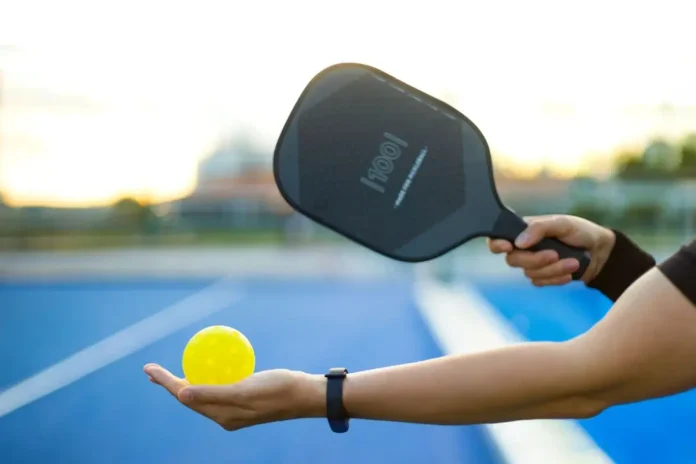Mastering Pickleball Scoring Techniques: Understanding pickleball scoring can seem difficult at first, but it’s essential to mastering the game. The most important thing to know is that only the serving team can score points. Whether playing doubles or singles, learning the rules for keeping score will help you stay focused on winning.
Pickleball Scoring Overview
Pickleball games are usually played to 11 points, with a required two-point margin for victory. In traditional side-out scoring, only the serving team can score a point.
When the receiving team wins the rally, they get the serve, but no points are awarded to them. If a player or team commits a fault, the serve passes to the other side.
Why Winning by 2 Points Matters
One of the key elements in pickleball is the “win by 2” rule. If the score reaches 10-10, play continues until one side leads by two points. This ensures that the final moments of the game are competitive, preventing a lucky win and making the end of the game more thrilling.
How Points Are Scored in Doubles
In doubles, players use a three-number system to announce the score. The score is called in this order: serving team’s score, receiving team’s score, and the server number.
For example, a score of “6-4-1” means the serving team has 6 points, the receiving team has 4, and the current server is Server #1. Each side gets two serves before a side-out occurs. The first team to commit two faults (or lose both of their serves) passes the serve to the other team.
Mastering the Doubles Score Call
-
Announce the score: The first number is your team’s score, followed by the opponent’s score, and the server number.
-
Serve on the right side: If your team’s score is even, serve from the right side. Switch sides after every point.
-
Switch servers: If the first server loses the rally, the second server takes over.
-
Side-out: Once both servers lose a rally, the other team gets the serve.
How to Keep Score in Singles Pickleball
In singles, players only track two numbers: the server’s score and the receiver’s score. Players serve from the right if their score is even and from the left if their score is odd.
Losing a rally causes a side-out, and the opponent gets the serve. The game continues until one player scores at least 11 points and leads by two.
The Role of Server Numbers in Doubles
In doubles, each team has two servers. The server number (1 or 2) helps keep track of who is serving. Server #1 starts the rotation from the right side. After losing a rally, Server #2 takes over. Once both servers lose their rallies, it’s a side-out.
How Serving Rotation Works in Doubles
The serving rotation in doubles follows this pattern:
-
Start with Server #1: The first server serves from the right side.
-
Switch sides: After scoring, the server switches to the left.
-
Server #2: If Server #1 loses a rally, Server #2 serves.
-
Side-out: If both servers lose a rally, the serve goes to the opponent’s team.
What Causes a Side-Out?
A side-out occurs when the serving team loses the rally. In doubles, this happens when both servers lose their rallies. In singles, a side-out happens when the player loses their serve. Common faults that cause a side-out include:
-
Hitting the ball into the net
-
Stepping into the kitchen to volley
-
Failing to follow the two-bounce rule
-
Serving out of position or making a wrong score call
Tournament Scoring to 15 or 21
Tournament games may go to 15 or 21 points instead of the usual 11, but the “win by 2” rule still applies. In many tournaments, players compete in a best-of-three series where the first two games go to 11 points, and the third game (if necessary) goes to 15 or 21.
Pickleball Scoring Tips
-
Call the score loudly: It’s important for everyone on the court to know the score. This reduces mistakes and confusion.
-
Follow the even/odd rule: Always serve from the correct side. If your score is even, serve from the right; if odd, serve from the left.
-
Track your partner’s server number: In doubles, knowing whether your partner is Server #1 or Server #2 prevents confusion.
-
Practice extended games: Get used to playing beyond 11 points for tournament play.
Impact of Mastering Scoring in Pickleball
Once you understand how pickleball scoring works, you can focus more on strategy and less on confusion. Knowing the rules ensures that you play efficiently and avoid unnecessary faults, which will ultimately help you win more games.
The clarity gained from mastering scoring can also help players transition easily from casual play to more competitive environments, such as tournaments.
News in Brief: Mastering Pickleball Scoring Techniques
Pickleball scoring can be tricky, but mastering it is essential for success. Games are played to 11 points with a “win by 2” rule, and only the serving team can score. Doubles requires a three-number score call, while singles uses just two numbers. Proper score calling and understanding server rotations ensure more competitive play.
ALSO READ: Mastering Pickleball: When to Take the Shot vs. Let It Bounce at the NVZ Line

